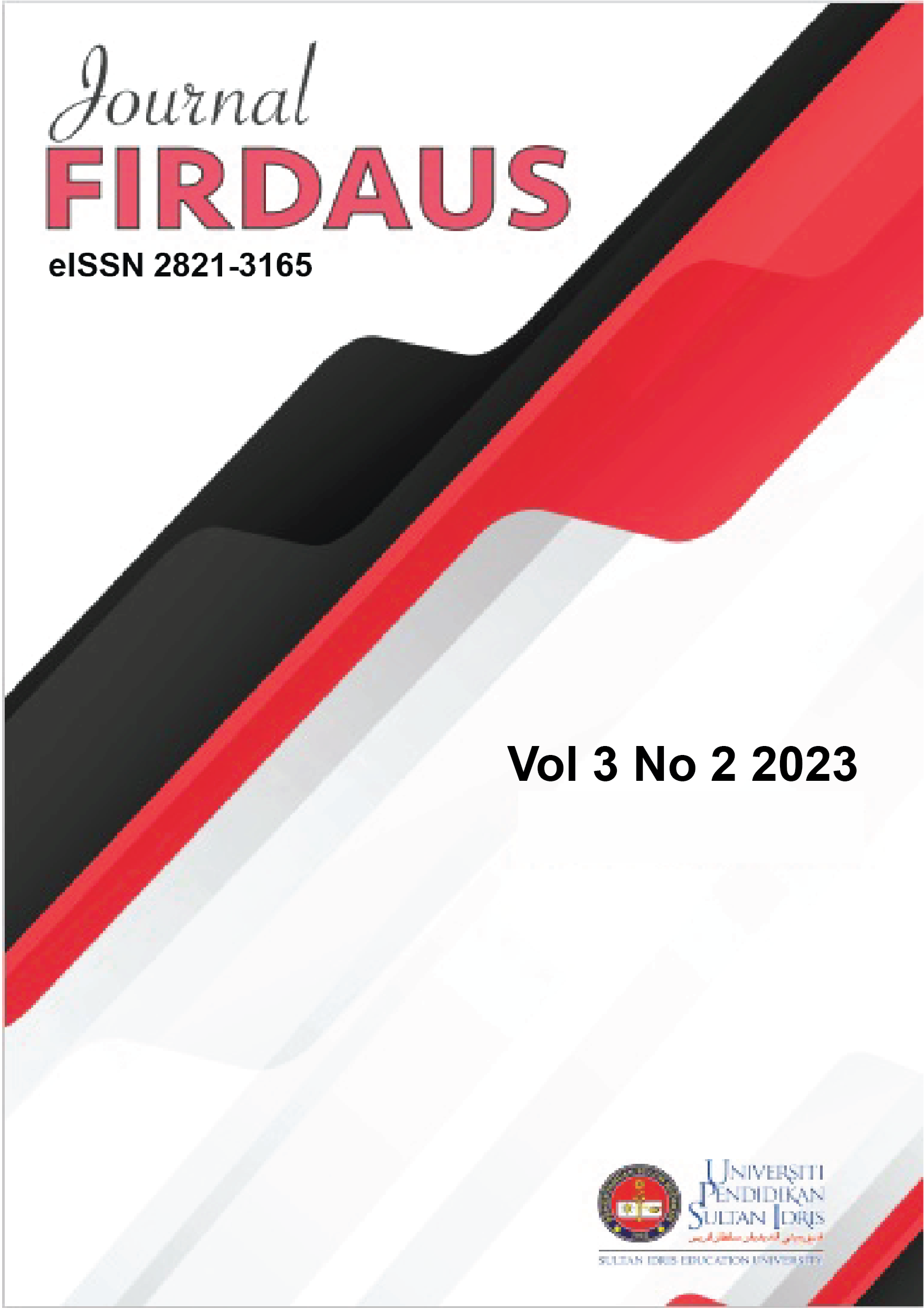Motivation for Teaching and Learning Arabic and its Impact in Understanding Qur’an to Transform Ulul Albab Generation: An empirical study
DOI:
https://doi.org/10.37134/firdaus.vol3.2.3.2023Keywords:
Arabic, motivation, Muslim Secondary Schools, Ulul Albab, Islamic EducationAbstract
This article critically examines teachers’ and learners’ views on their motivation for teaching and learning the Arabic language in secondary school settings. It discusses the motive and rationale behind Arabic provision within secondary schools and the degree to which this provision meets the expected outcomes in transforming Ulul Albab generation with special focus on learning Arabic for Qur’anic purposes. As a Muslim educator specialized in teaching Arabic, I have seen that most of the Islamic schools have the provision of teaching and learning Arabic with a religious view; also, I have seen inappropriate syllabus use, shortage or complete lack of resources and many other issues which hinder proper teaching and learning of Arabic. The motivation behind this study came from a deep interest in examining views of learners and teachers to find out their motives for learning and teaching this language. As a practitioner in the field, I am hoping that this empirical enquiry will contribute to the wider efforts aiming to improve this important teaching provision in the British secondary schools particularly, and for the wider world generally. I conducted this enquiry within the interdisciplinary field of Islamic Education Studies. This study aims to contribute to the growing body of empirical studies in this field. My review of the literature suggests that the teaching of Arabic in the secondary schools has not been subjected to empirical research, especially to explore the motives behind it. I feel that there is an urgent need to investigate the challenges facing teachers of Arabic with a special focus on Qur’anic Arabic within the context of secondary schools, to generate Ulul Albab.
Downloads
References
The holy Quran, Chapter 3, Verse: 7 https://ams-uk.org/ https://www.arabacademy.com/quranic-islamic-arabic-courses.
https://assets.publishing.service.gov.uk/government/uploads/system/uploads/attachment_data/ file/1121618/GCSE_subject_content_modern_foreign_languages.pdf
https://archive.org/details/al-arabiyyah-bayna-yadayk/Al-Arabiyyah-Bayna-Yadayk-Book1 PartA/
https://archive.org/details/al-arabiyyah-bayna-yadayk/Al-Arabiyyah-Bayna-Yadayk-Book1PartB/
https://www.sifatusafwa.com/en/aqeeda-creed/iqtidaa-as-sirat-al-mustaqim-ibntaymiyyah.
Al-Isfahani, Al-Raghib. Mufradat Alfaz al-Qur’an. Syria. Dar al-Qalam.
Azad, Abul Kalam, (2021). Mini Safeerul Qur’an. London. Muslim Research Centre.
Braun, V., & Clarke, V. (2006). Using thematic analysis in psychology. Qualitative Research in Psychology, 3(2), 77-101.
Creswell, J. (2007). Qualitative inquiry and research design: Choosing among five approaches (2nd ed.). Tousand Oaks, CA: Sage.
Catherine Marshall & Gretchen B. Rossman (2006). Designing Qualitative Research. California. London, Singapore. SAGE Publication Ltd
Denzin, N. K., & Lincoln, Y. S. (2008). Introduction: The discipline and practice of qualitative research. In N. K. Denzin & Y. S. Lincoln (Eds.), Strategies of qualitative inquiry (pp. 1-43). Thousand Oaks, CA: Sage.
Greg Guest, Kathleen M. MacQueen, Emily E. Namey. (2012). Applied Thematic Analysis. California. SAGE Publication Ltd.
Kitzinger and Wilmott (2002). Thematic Analysis in Qualitative Research. IGI Global. Hershey PA. USA.
https://d1.islamhouse.com/data/en/ih_books/chain/en_Majmoo_alFatawa_IbnBaz/en_01_Maj moo_alFatawa_IbnBaz.pdf
Merriam, S. B. (2002b). Introduction to Qualitative Research. In S. B. Merriam (Ed.), Qualitative research in practice: Examples for discussion and analysis (pp.3-17). San Francisco, CA.: Jossey-Bass.
Merriam, S. B. (1988). Case study research in Education: A Qualitative Approach. San Francisco, CA: Jossey-Bass.
Merriam, S. B. (1998). Qualitative research and case study applications in education. San Francisco, CA.: Jossey-Bass.
Robinson, C. (2002). Real World Research A Resource for Social Scientists and Practitioner-
Researchers. 2nd Edition, Blackwell Publishing Ltd., Oxford
Robert M. Emerson, Rachel I. Fretz, Linda L. Shaw. (1995). Writing Ethnographic Fieldnotes. Chicago University of Chicago Press.
Richards and Farrell. (2011). Practice Teaching A Reflective Approach. Cambridge University Press.
Sahin, Abdullah. (2013). New direction in Islamic Education: pedagogy and identity formation. Kube Publishing. UK
Strauss, A., & Corbin, J. M. (1990). Basics of qualitative research: Grounded theory procedures and techniques. Sage Publications, Inc
Surty, Ibrahim. Towards Understanding Qur’anic Arabic. Fifth Revised Edition 2017. Birmingham
Stake, R. E. (1995). The art of case study research. London, SAGE Publication Ltd.
Wellington, J. (2000). Educational research: contemporary issues and practical approaches. London: Continuum International Publishing Group.
Wolfinger, N. H. (2002). On writing fieldnotes: Collection strategies and background expectancies. Qualitative Research, 2(1), 85-93. https://doi org.sheffield.idm.oclc.org
Yin, R.K. (2016). Qualitative Research from Start to Finish, Second Edition. New York: The Guilford Press.
Downloads
Published
Issue
Section
License
Copyright (c) 2023 Md Mahmud Sayeed

This work is licensed under a Creative Commons Attribution-NonCommercial-ShareAlike 4.0 International License.





